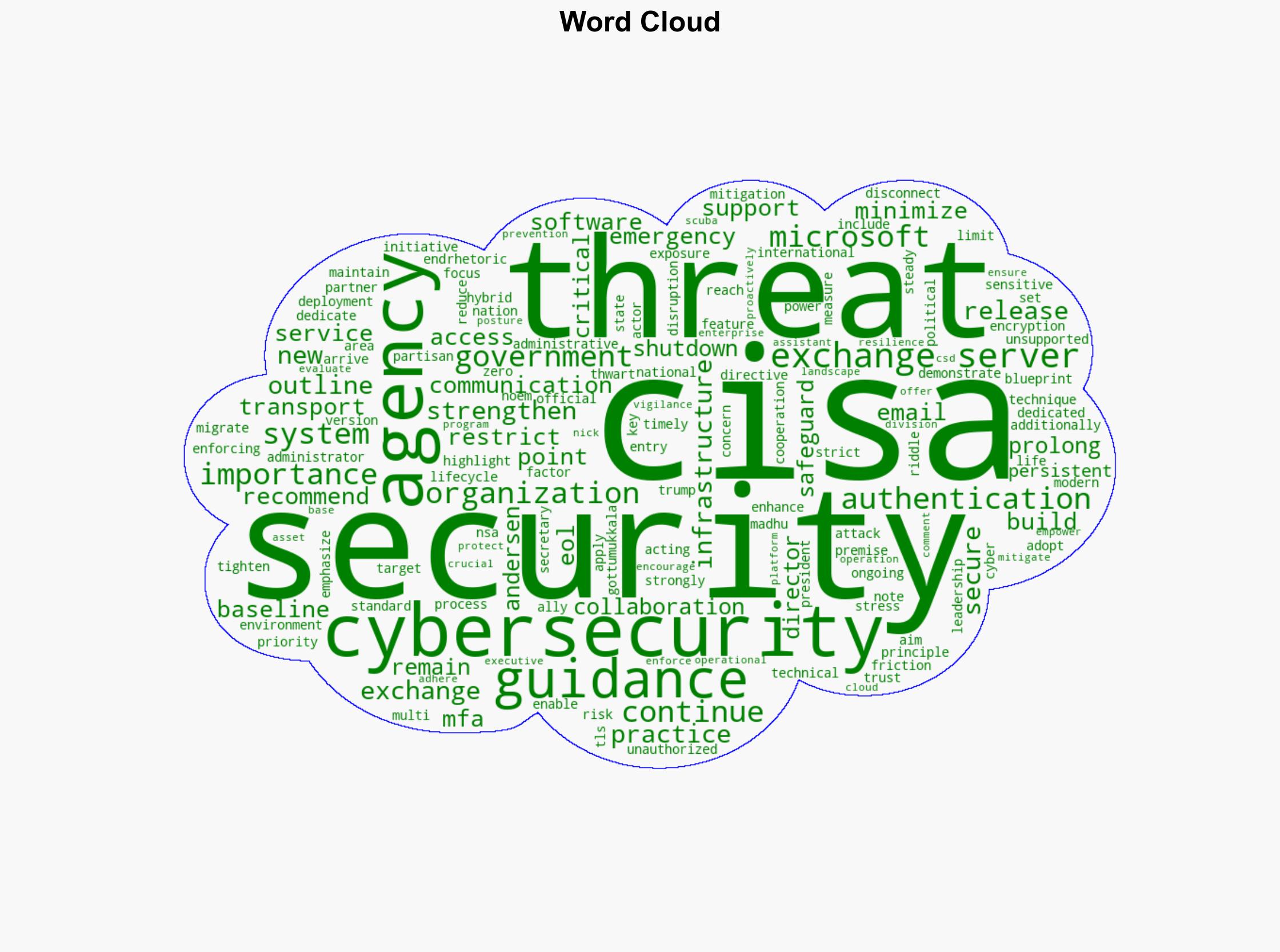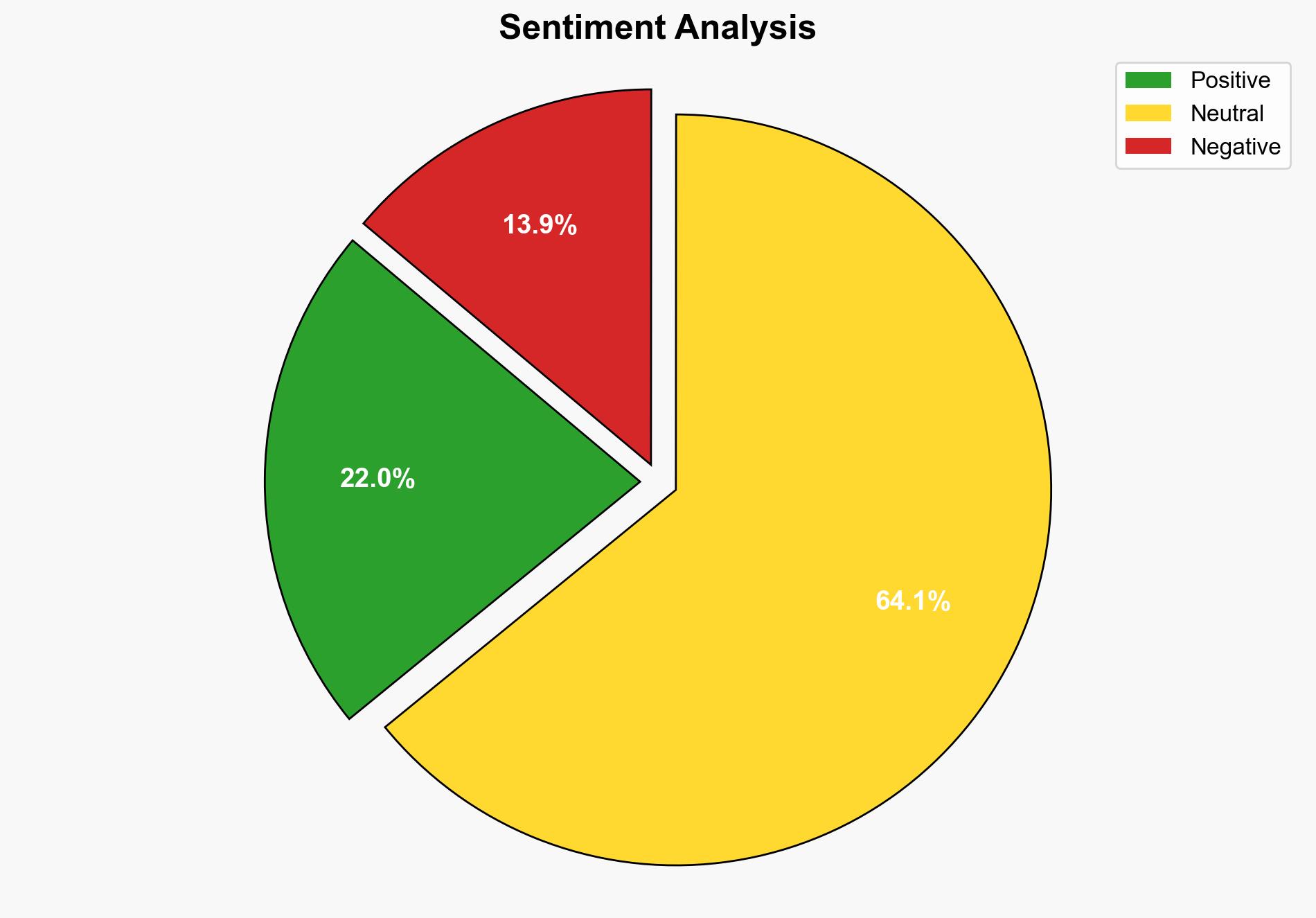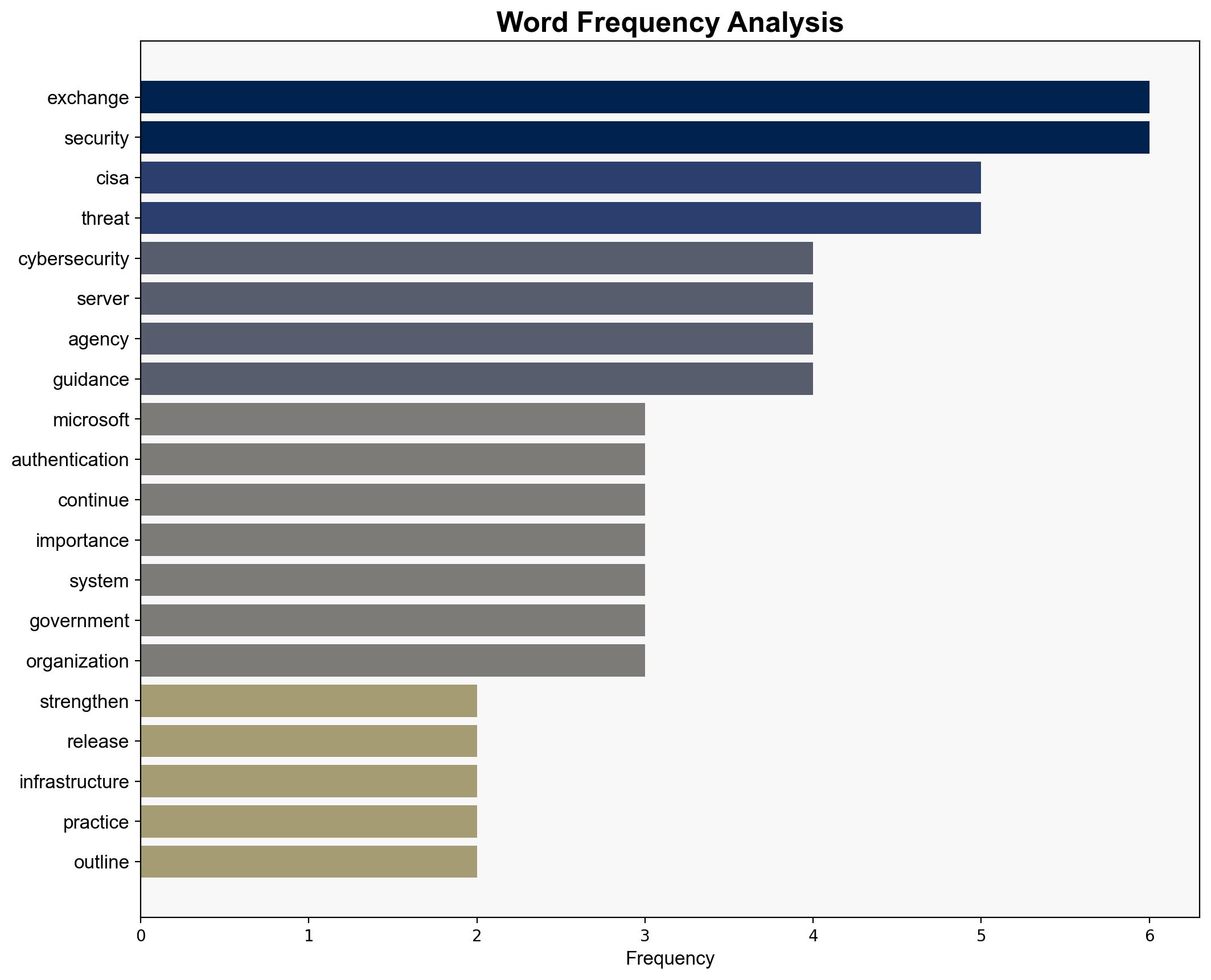CISA and NSA Outline Best Practices to Secure Exchange Servers – Infosecurity Magazine
Published on: 2025-11-03
Intelligence Report: CISA and NSA Outline Best Practices to Secure Exchange Servers – Infosecurity Magazine
1. BLUF (Bottom Line Up Front)
The most supported hypothesis is that the release of the new cybersecurity blueprint by CISA and NSA is primarily a proactive measure to mitigate ongoing threats to Microsoft Exchange Servers, with a high confidence level. The recommended action is for organizations to immediately adopt the outlined best practices to enhance their cybersecurity posture. This report uses Analysis of Competing Hypotheses (ACH) to evaluate the hypotheses.
2. Competing Hypotheses
Hypothesis 1: The release of the cybersecurity blueprint is a proactive measure to address known vulnerabilities and prevent future cyberattacks on Microsoft Exchange Servers.
Hypothesis 2: The release is a reactive response to recent or imminent threats specifically targeting Microsoft Exchange Servers, indicating an elevated risk level.
Using ACH, Hypothesis 1 is better supported by the emphasis on proactive measures such as adopting zero trust principles and enhancing encryption standards, which suggests a forward-looking approach rather than a reaction to immediate threats.
3. Key Assumptions and Red Flags
Assumptions:
– Organizations have the capability and resources to implement the recommended cybersecurity measures.
– The guidance provided by CISA and NSA is comprehensive and up-to-date with the latest threat intelligence.
Red Flags:
– Lack of specific mention of recent attacks or breaches could indicate underreporting or a strategic omission.
– Potential over-reliance on Microsoft’s own security measures without independent verification.
4. Implications and Strategic Risks
The guidance aims to mitigate risks associated with cyberattacks on critical communication systems. Failure to adopt these measures could lead to significant data breaches, economic losses, and damage to national security. The geopolitical dimension includes potential exploitation by nation-state actors, while the psychological impact involves eroding trust in digital communications.
5. Recommendations and Outlook
- Organizations should prioritize implementing multi-factor authentication and zero trust principles to secure their Exchange Servers.
- Regularly update and patch systems to maintain a robust security posture.
- Best Case Scenario: Widespread adoption of the guidelines leads to a significant reduction in successful cyberattacks.
- Worst Case Scenario: Organizations fail to implement measures, resulting in increased vulnerability to cyber threats.
- Most Likely Scenario: Gradual adoption with varying degrees of success based on organizational resources and commitment.
6. Key Individuals and Entities
– Madhu Gottumukkala
– Nick Andersen
7. Thematic Tags
national security threats, cybersecurity, counter-terrorism, regional focus




